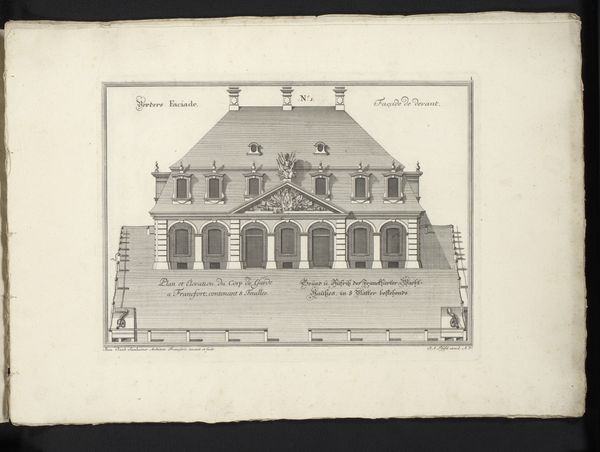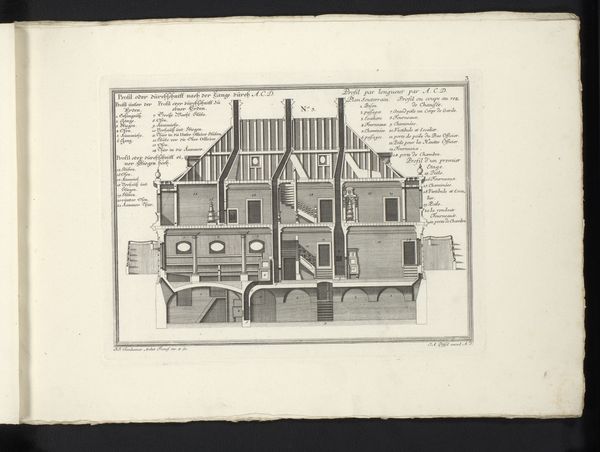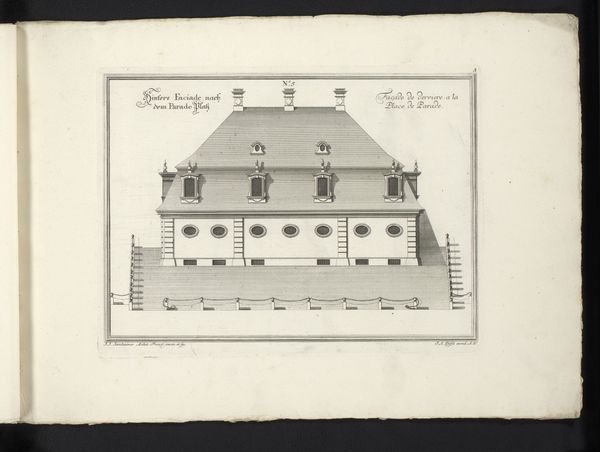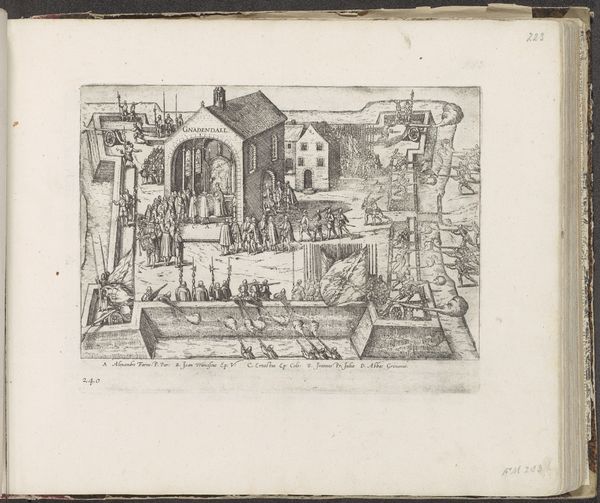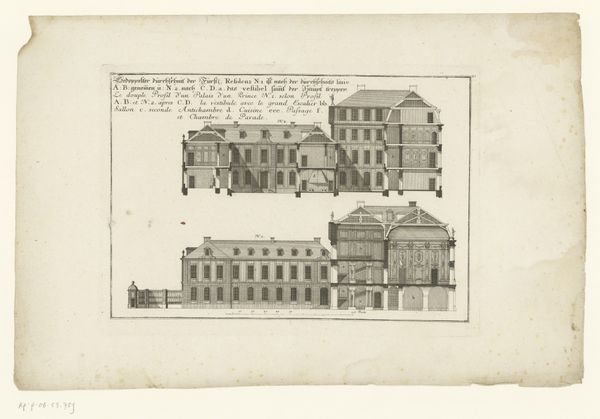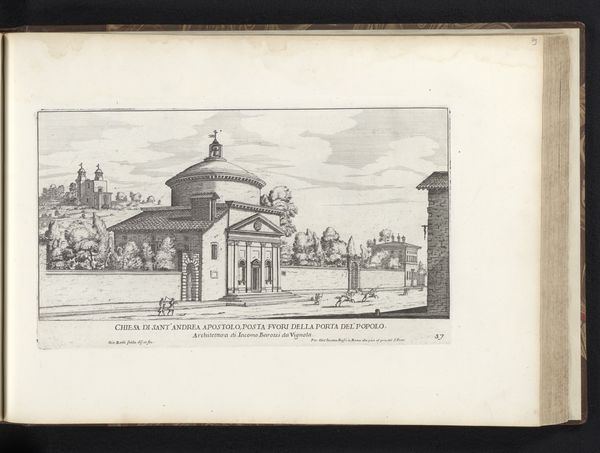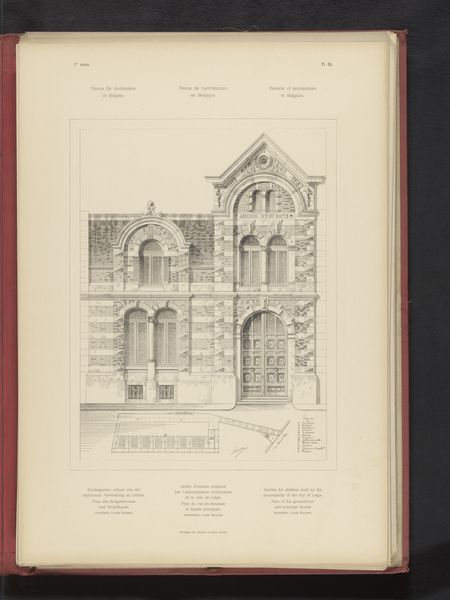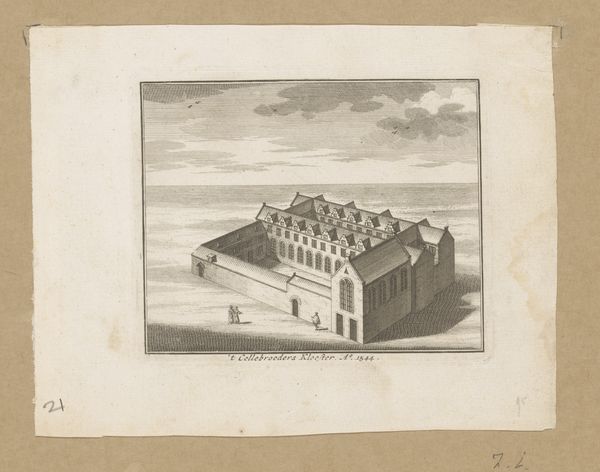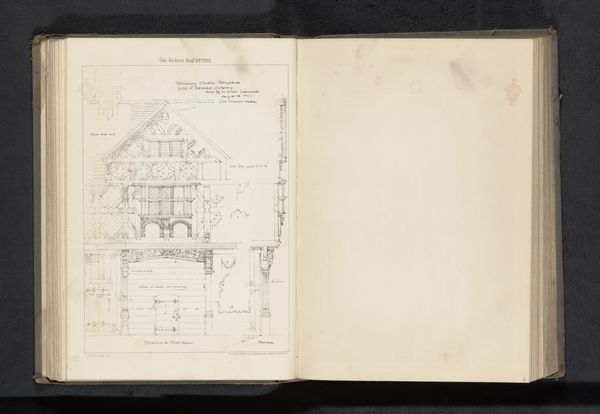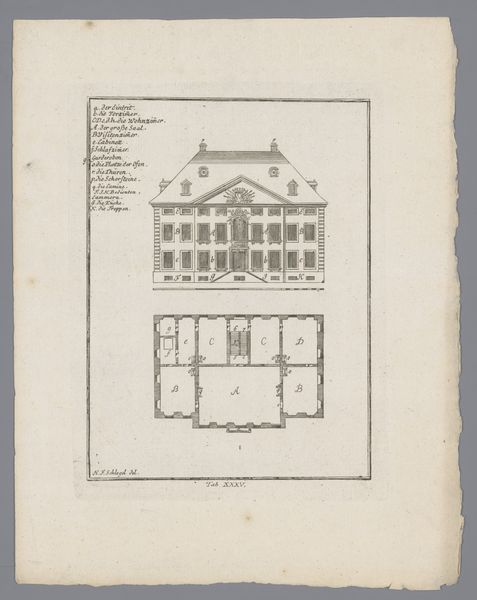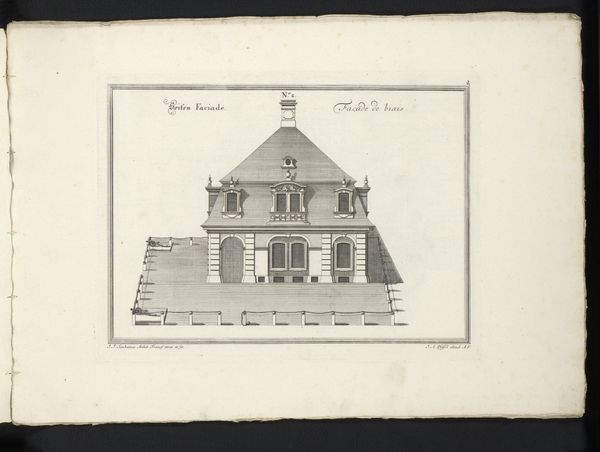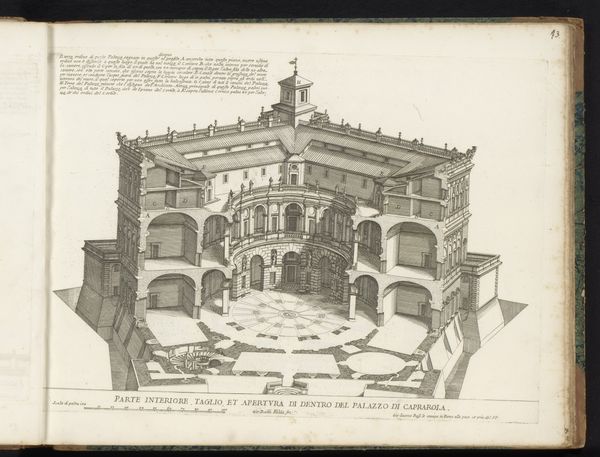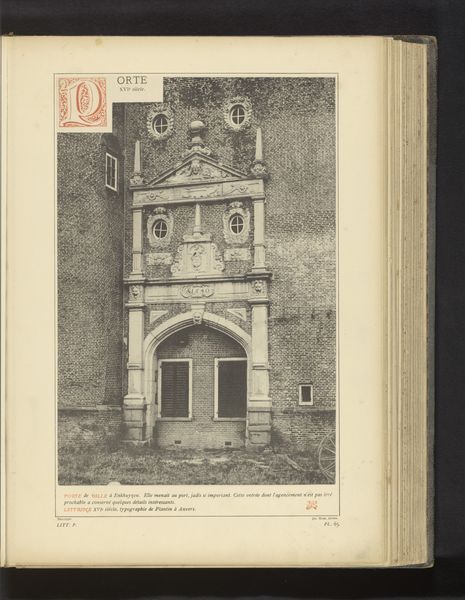
Doorsnede door de breedte van de Hauptwache, te Frankfurt am Main c. 1729 - 1730
0:00
0:00
drawing, print, etching, paper, engraving, architecture
#
drawing
#
baroque
# print
#
etching
#
paper
#
cityscape
#
history-painting
#
engraving
#
architecture
Dimensions: height 268 mm, width 357 mm
Copyright: Rijks Museum: Open Domain
Editor: This is "Doorsnede door de breedte van de Hauptwache, te Frankfurt am Main" by Johann Jakob Samhammer, made around 1729-1730, an etching on paper. It shows a detailed architectural cross-section. I’m struck by the intricacy and almost obsessive detail – it's more than just a building; it's a representation of something, but I’m not sure what. What do you see in this piece? Curator: I see a meticulous representation of labor and material processes, meticulously etched onto the paper. Notice how the drawing prioritizes the *making* of space over aesthetic qualities; every joist and stone is rendered with an even hand, democratizing their importance. The image speaks to a desire to understand the world through its constituent parts and the physical effort involved in creating civic infrastructure. What does that suggest to you? Editor: I suppose that suggests it's not about glorifying the final building so much as understanding how it was brought into being – all the hands and effort that shaped the material. Was this a common approach at the time? Curator: Absolutely. Think about the broader context: the Baroque period, driven by emerging economies that transformed materials on a grand scale. Architectural renderings, such as this, highlight the command over natural resources and social structure needed to facilitate grand undertakings. Notice the various levels – above and below ground, each with its function and implication for human activity. What kind of human activities are you envisioning? Editor: Military activities, most probably, since this a guardhouse. Also storage, cooking, cleaning, and everyday routines needed to maintain order and power within the city. So the image tells us about the social and material life of this period. Curator: Precisely. It asks us to consider the processes of governance itself and reminds us that no idea – no matter how ambitious or grand – exists apart from the material conditions that make it real. Editor: So it’s not just about architecture; it's about understanding the labour and systems that created that architecture. That gives me a whole new appreciation for it. Curator: Exactly! By analyzing such drawings, we gain valuable insights into historical systems of labor, value and material use that would be otherwise impossible.
Comments
No comments
Be the first to comment and join the conversation on the ultimate creative platform.
